PDF chapter test TRY NOW
The poem 'How to Tell Wild Animals' introduces various wild animals to the readers. The poet talks about each animal in a very sarcastic way. Wild animals are general predators, and concepts such as death and killing can be traumatic when expressed openly. But the readers can't but help but be amused by the hilarious yet factual representation of each animal.
The first stanza introduces the Asiatic Lion. The poet subtly seems to say that the wild animals do not enter the human territory unnecessarily, rather it is the other way round. She addresses the readers and says that they can get introduced to the lion only if they visit his place by chance. The lion resides in the jungles of the east. Asiatic Lions, in the present world, are an endangered species, meaning that their population is nearing extinction. They are found today only in India. The Gir National Park in Gujarat preserves the only fewer lions that are remaining. Wells being a westerner, says that the lions are found in the East, which is India. The poet says that if the readers see a large and tawny beast advancing towards them in a hurry, then they need not doubt about the identity of the animal, as they can confirm it to be the Asiatic lion. The poet also says that the lion will make sure that the person is dead and will roar as they slowly lay there dying. It is a sarcastic remark, as there is not much use to knowing the animal in the final moments of one's life.
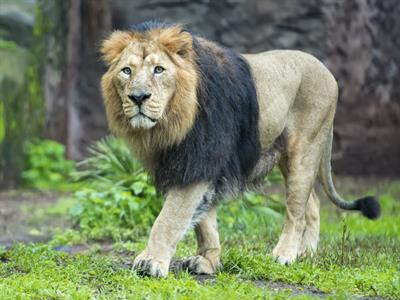
Asiatic Lion advancing
The poet says that if, by any chance, the readers escape the lion and show the audacity to roam around the jungle, they might come across the noble beast of the jungle. The poet is referring to the tiger, who is considered to be an animal of royalty and nobility. The poet describes the tiger as having black stripes on a yellow ground. She calls the body of the tiger a ground, signifying its massive appearance. The poet, as if casually, advises the readers to check if the tiger is eating them, indicating that the tiger might attack in the blink of an eye. She also says that this is a simple hack to distinguish and identify the rest of the animals from the Bengal Tiger. The Bengal Tiger is another species that is slowly becoming endangered. They are found predominantly in India and in some parts of Pakistan, Nepal, Bangladesh and Tibet.
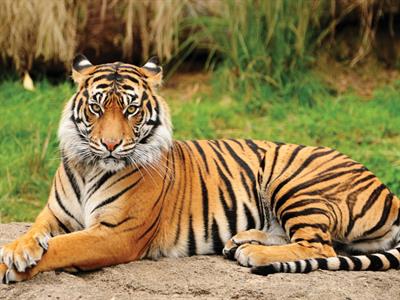
Bengal Tiger
The third stanza begins with an assumption that the reader has managed to escape the dangerous lion and tiger. But the danger prevails as one progresses deeper into the jungle. If at all one strolls forth into the wilderness, they are sure to witness another creature who will make sure to kill. They might meet a beast whose skin is peppered with spots. The poet uses the word peppered as the black spots appear as though they are sprinkled all over the surface. This is a beast that does not stop and think practically, as its first instinct is to jump on the human. It is not a normal jump, as it leaps from any distance onto the body. Here again, the person gets to know that he is being attacked by a leopard, only on the verge of death. But it will obviously be too late if they start shouting for help or roar with pain, as the leopard will not show any mercy but rather would keep leaping more onto the person's body.
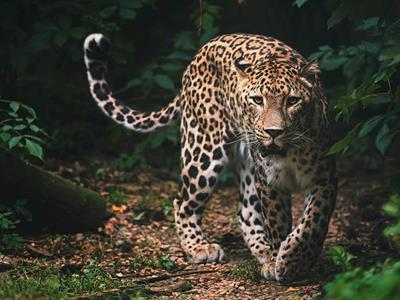
A Leopard
The poet moves from the vicinity of the jungle to a common yard in front of a person's home. This might also be a reference to the fact that human beings intrude into the space of the animals, demolish their houses and build dwelling places. If that is the case, one cannot blame the wild animals for intruding into human spaces. If at all by any chance, when the person strolls around the yard and meets a burly creature who tries to hug him, then he is to make sure that it is a bear. But the hug here is not an amicable one but rather a life-threatening one. The bear holds on to a person so hard that they end up suffocating. The bear weighs to a great extent, and it is difficult for a human body to retain the huge weight of the bear. Even after all these events unfolding, if one has any doubts regarding the identity of the animal, the bear would just give a slight caress, making sure life flies out of the body. One small caress from the bear is more than enough to end one's life.
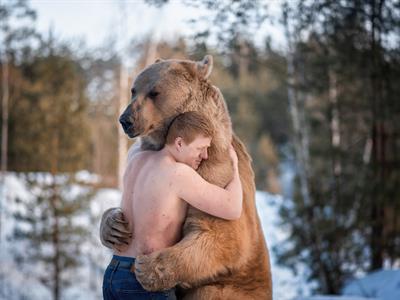
Bear hugging a man
The poet dedicates this entire poem only to people who do not know to identify the wild animals. The poem can serve as a warning as they do not have to wait until the animal preys on them. A new person who has no experience at large in viewing or distinguishing wild animals from one another may be surprised or confused initially, as all wild animals are predators. In order to easily distinguish between a crocodile and a hyena, she gives a clue. Only novices have confusion in differentiating between the two animals. When the hyena attacks the prey keeping a smile on its face, the crocodile attacks as it weeps, it is a common belief that crocodiles cry when they attack the prey, either as a trap to lure or as an emotion for their violent act. 'Crocodile Tears' is even a saying to represent a fake person. Hyenas, on the other hand, are joyous about getting prey and relish the kill with a smile.
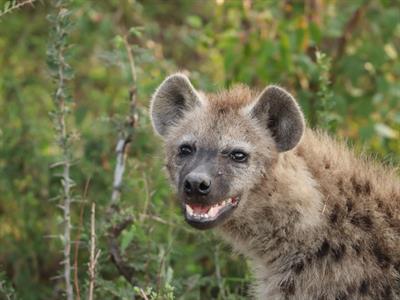
Hyena smiling
Although the poem begins with dangerous beasts like the lion and tiger, the poet ends with an introduction to a chameleon. She says that a true chameleon looks very small in size and resembles the appearance of a lizard. Like snakes, chameleons do not have a middle ear or ear drums. However, they can detect sound frequencies of 200 - 600 HZ. Contrary to their hearing capacity, they can see both visible and ultraviolet light. They do not have wings, as they are reptiles. The poet also says how it can be slightly dangerous as it has the capacity to camouflage its presence and become one with the surface that they are in. She sarcastically ends the poem by saying that if there isn't anything on the tree, then there must be a chameleon that has camouflaged its colour to the bark's colour.
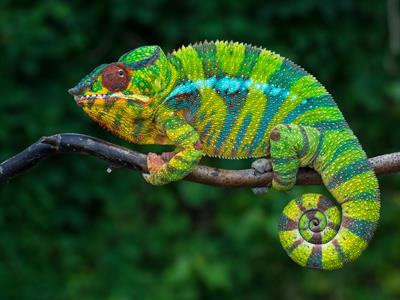
Chameleon
